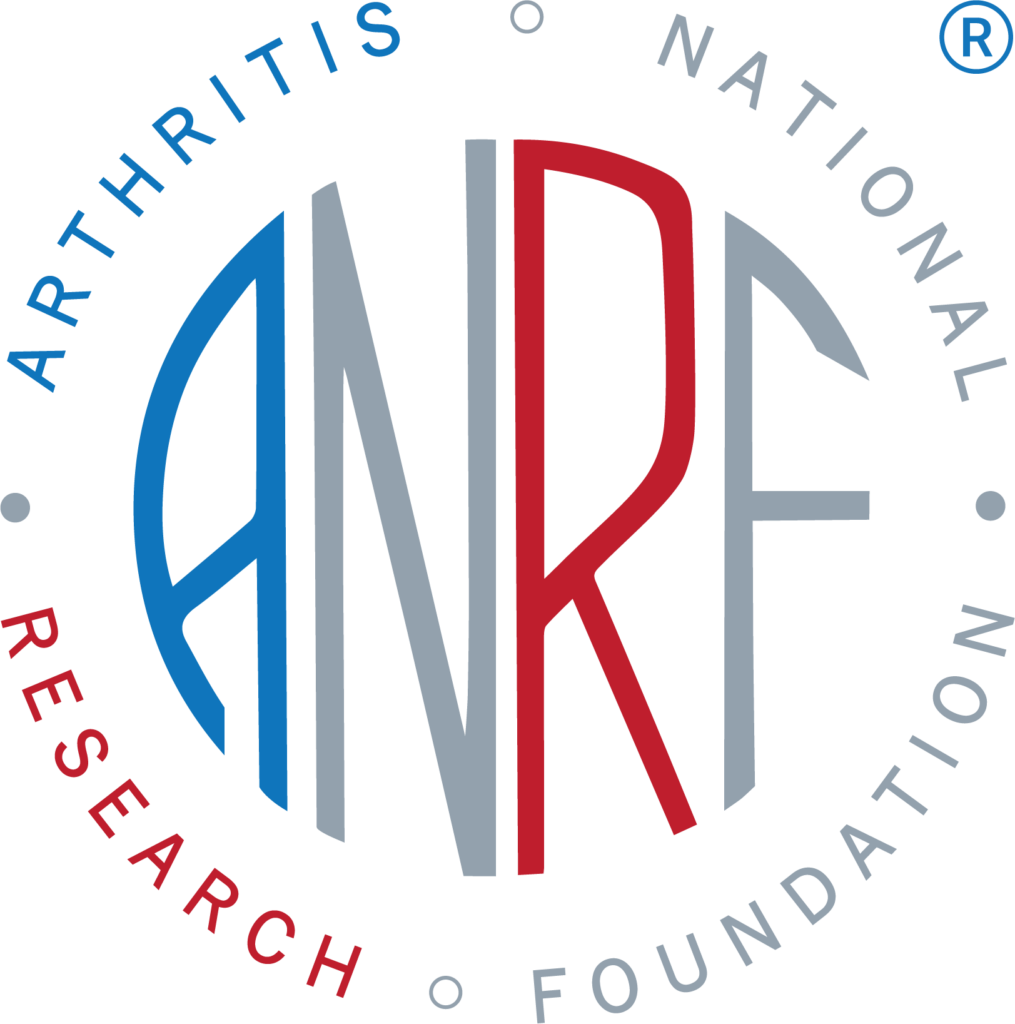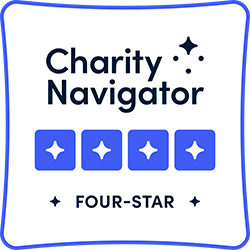From high school star athlete to dual arthritis diagnosis in a blink of an eye
As a teenager, Staci Stringer was a star athlete, at the top of her game and the picture of health. Upon accepting a volleyball scholarship, her future was destined to include a successful collegiate sports career, complete with the student athlete experience of traveling, going to school out-of-state and having access to all the tools to stay in top physical condition. But then, while still in high school and working in a coffee shop, Staci noticed a sudden lack of strength, spilling milk onto herself as her hands and wrists gave out. Then, she began experiencing unimaginable pain, and in the blink of an eye her health drastically changed, and so did her life.
Forced to turn down her scholarship due to her sudden change in health, Staci began a journey of doctor visits, research, asking questions, continued struggles with her health and more doctor visits. Multiple doctors tested and checked for multiple conditions, overlooking her inflammatory markers, assuming she was too young and fit to have arthritis. Still searching for the cause of her inexplicable pain, doctors prescribed prednisone — a steroid often prescribed for many diseases — for eight months, until Staci was diagnosed with not one, but two autoimmune diseases: psoriatic and rheumatoid arthritis.
“I never thought I would go to bed sick one night and the next morning wake up with a chronic disease — something I’d deal with for the rest of my life. And that’s scary to think about,” Now, eighteen years after her diagnosis, Staci reflects. “Every micro decision most people don’t think twice about, I must consider how it will impact my every second of that day and the days to come. I’m always silently processing a massive pro/con to make even the smallest of decisions.”
That approach started the moment her hands and wrists gave out and the pain began. She had to preserve her energy to get through the day and to put the effort toward determining a diagnosis, and then toward living with that. Like for many faced with a chronic illness, Staci’s journey to a diagnosis and learning what that meant, was frustrating and emotionally challenging.
Instead of the rheumatologist taking time to explain physical and emotional side effects, what to expect with a dual arthritis diagnosis and provide comfort during a time of so much uncertainty and confusion, the doctor approached it with callous and a routine checklist mentality, rushing through life-changing information — including that she couldn’t have children. In addition, the appointment was constantly interrupted with the doctor tending to other patients. Staci felt like she was part of a laboratory experiment.
With an uneasy feeling, lack of information, working to grasp the reality of the life-altering impact of the diseases that were now part of her life, Staci pursued answers, a second opinion, treatments and a different future. There was no longer the vision of a life with children, a collegiate athletic dream or the certainty of what her career could, or would, be.
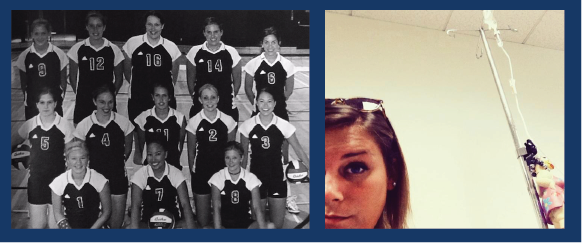
Staci played volleyball at Lake Oswego High School in Oregon, and planned to play college volleyball on scholarship. With the pain in her hands and wrists, she wasn’t able to continue to play and stayed in state and graduated from the University of Oregon. Through the years, treatments, doctor visits and overall health care have become a routine part of life.
A future changed
Now with her new physical limitations and the elimination of playing competitive volleyball, Staci stayed in-state to attend college at the University of Oregon, an in-state school closer to home, doctors and family. Going through college while determining a diagnosis, adjusting to life with a chronic illness, then the side effects of treatments and still trying to be a student — both academically and socially — was not the way Staci had anticipated those first years away from home.
It’s not what her family envisioned either. While their vision was more of a typical 18-year-old college freshman going through the growing pains, and fun of living away from home, her life was more focused on the struggle she went through with treatments and managing this new way of life that centered on just trying to be part of a somewhat “normal” existence. Her family misinterpreted her weight gain due to prednisone and reduced levels of activity due to pain as her simply being lazy, or the college lifestyle. They were supportive, as families are, but they never really understood.
From the outside looking in, Staci was another student going through the grind of determining her major: making sure she had the right credits, participating in extracurriculars, grinding through required classes and group projects. But the part of a chronic illness like arthritis—especially a dual diagnosis—is managing the pain and fatigue and learning when to go to a professor or a boss and share your struggle and ask for an extension on a deadline or understanding that an absence does not equate to negligence. With her determination, learning to navigate difficult situations and conversations and keeping a balanced focus on her health and her future goals, Staci graduated with a degree from the School of Journalism and Communication and entered more unknown territory of finding a career.
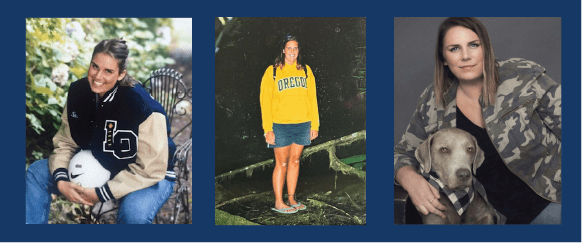
Through the years: Staci played volleyball at Lake Oswego High School in Oregon (left), graduated from the University of Oregon School of Journalism & Communication (center) and today (right) is a young professional balancing managing her health and working. Gus, her faithful service dog, has been a stable part of her life through the years.
Certainly, this is a nerve-wracking time for any young college graduate — the competition, the self-doubt juxtaposed with ambition and excitement, the lengthy interview processes, moving to a new city, a new financial reality, etc. But for Staci, she also didn’t know how her health would persevere – or would it? With a leap of faith and now years of angst and pain management with her, she moved 275 miles north to Seattle to work in the public relations industry — which is a field never short on needing energy, in a city where endless personal and professional opportunity evidently existed. For Staci, this meant navigating the new pros and cons of every little thing.
Fortunately, Staci was moving with a friend, but not just any friend. Gus was her service dog trained to accompany her to infusions and became a stable and emotional presence in her daily life. But on the days, and the weeks, when it was difficult to just get out of bed, Staci needed more than what her four-legged friend could provide. She reached out to her mom to ask for help, which can be a difficult ask for a young, independent professional. It was a turning point for her and her family—an a-ha moment.
One morning Staci woke to find her mom had taken Gus for a walk and left a bouquet of flowers and a card. Her mom had a revelation, finally seeing the reality of the impact psoriatic and rheumatoid arthritis had on Staci’s life—and the demon it really had become. She sobbed reading the card, and soon realized the opportunity it created for the two to build a new kind of relationship. Staci realized that she was not the only one to grieve the life she thought she would have. Every parent when their child is born hopes for the best life possible for their child, they have hopes and dreams they will be successful and find love and live a happy life. Her mom was grieving the life she thought her daughter would have and it was important for her family to more fully understand the adult Staci had become — the one living with a chronic illness while still pursuing a career and active lifestyle.
With her family support, Gus, detailed attention to managing living with a dual arthritis diagnosis, Staci was able to reincorporate volleyball into her life as a high school coach – both in the Seattle area and when she returned to Oregon where she works with her family business.
“I ended up moving to Southern Oregon to be closer to my family. Now that they are around during my flares, they all started to understand my pain better and what I’ve gone through and pitch in to help, be it make me meals when I can’t cook, pick up medications or help with my dog,” she said.
Positive coping
Staci’s family support has been essential as has her discovery of writing and advocacy. Writing helps her track her progress, compare flares, monitor her pain and provided an emotional outlet.
“I realized I’m still trying to convince myself that I have arthritis and this is my life. Writing helps me accept my diagnosis and also educates others. It helps me identify why I may say no to things, and others see the real side of what someone with an autoimmune disease faces. I show the good and the bad days, not for sympathy or pity but for education and support for others. I’ve had many people who have read my story reach out and ask for help, and it feels amazing to get to help them on their journey.”
Staci knows greater awareness is needed about the use of chronic pain medication and she highlights this in her writing as well. This often comes with a stigma and can prevent patients getting the medication they need to just make it through the day.
“For chronic pain patients like me, opioids are a tool just like any other medication. Chronic pain patients don’t get high from opioids, they are not ‘pain Killers’ to us, they are pain reducers or neutralizers, a medication that takes the edge off so we can have a shot at living a normal life.”
Staci used to work for a pharmaceutical company that shared patient stories and quickly learnt just how much of a positive impact this story telling could have. The more she shared her story on various social media platforms, the more her friends and family reached out to her, telling her they had no idea of the struggles she had been facing. She discovered many patients like herself, hide their pain well, trying to get on with their life in relation to their condition. For some, a mask of normality helps them to cope. Unfortunately, this means that some, even doctors, don’t believe the level of pain they are in, accusing them of faking their illness, which can be exhausting when energy is already a scarce resource.
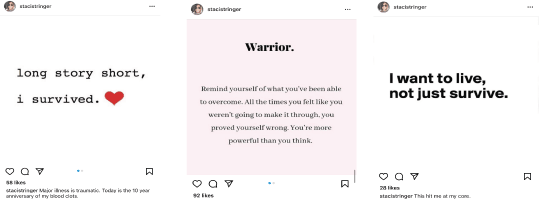
Through her journey, from diagnosis to learning to live with a chronic illness, Staci has found writing and advocacy to be healing ways to manage the psychological impact of having arthritis. Sharing photos of life and words wisdom on instagram is one of her favorite ways to share her message.
This is where her writing and advocacy came together. Staci started to share what happens behind filters and pretty pictures. She showed the raw, the ugly and pain, which allowed for authentic connections with others going through similar journeys, open doors to new conversations and allowed others to ask her advice. In addition, her friends understood her day-to-day life and were able to provide a new level of support.
“If I can help one person feel not so alone or give advice on what I’ve been through I feel like I’ve helped and my story has made a difference. There are a lot of things I wish I knew when I was first diagnosed,” she said.
Most recently, Staci has elevated her commitment as an advocate and joined the Board of Directors for the Arthritis National Research Foundation, committing time and her voice to impact the research being done on behalf of the 294,000 juveniles living with arthritis, and the 58.5 million adults in the U.S. that manage life every day. These are significant numbers that continue to grow and unfortunately, Staci’s diagnosis has counted her among both demographics. Now, well into adulthood, she can reflect on what a life could have been like without her dual diagnosis of rheumatoid and psoriatic arthritis — and wonder that “what if”—a collegiate athlete, boundless energy, a different career trajectory. That’s easy to do and not unreasonable to go to at times, but more practical and productive is to direct her energy as an advocate and helping the future of research and those faced with similar life trajectories.
“I hadn’t paid a lot of attention to research until recently but now it’s essential. What scientists are working on now is my future and my survival depends on it,” Staci acknowledged. “I am so thankful for the researchers and organizations like ANRF because they are funding what will be my quality of life.”

